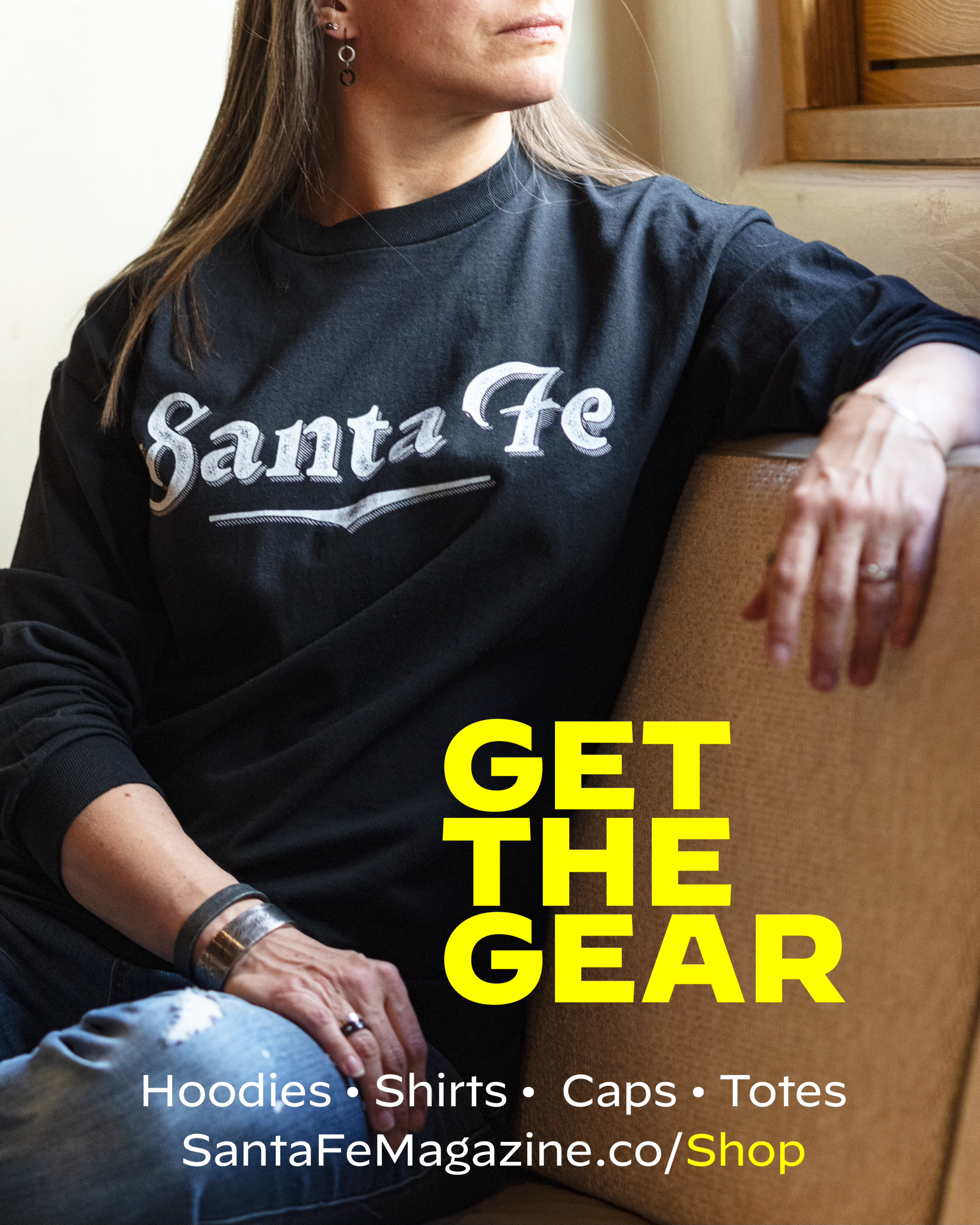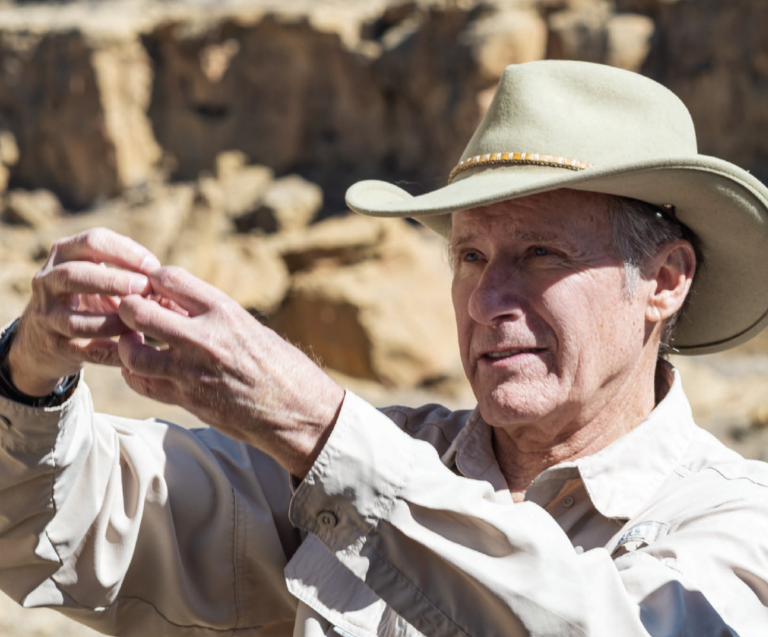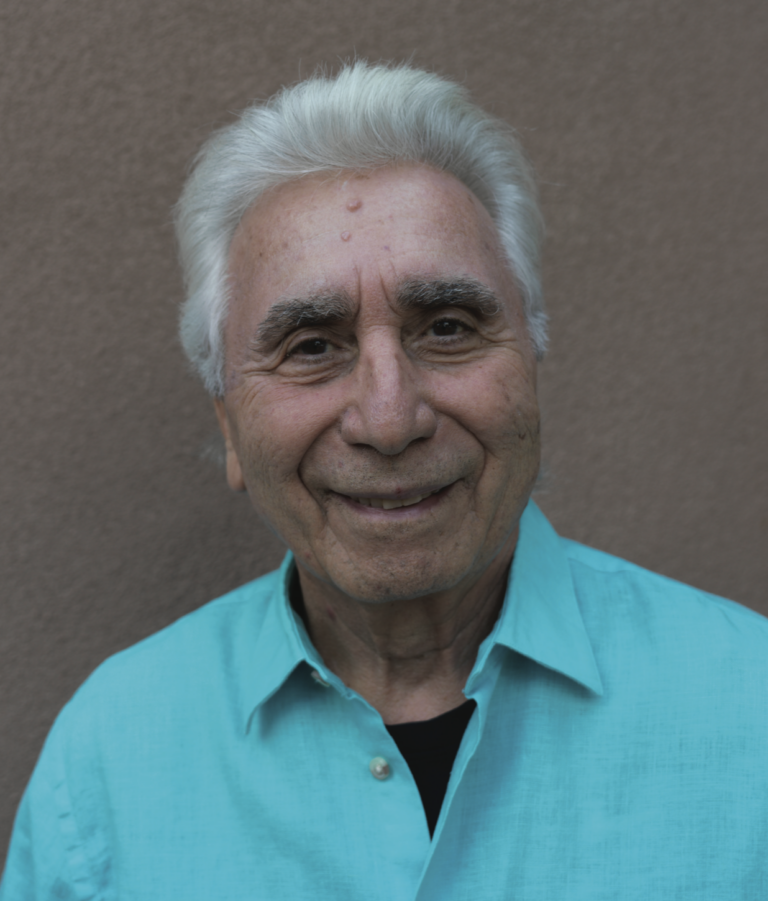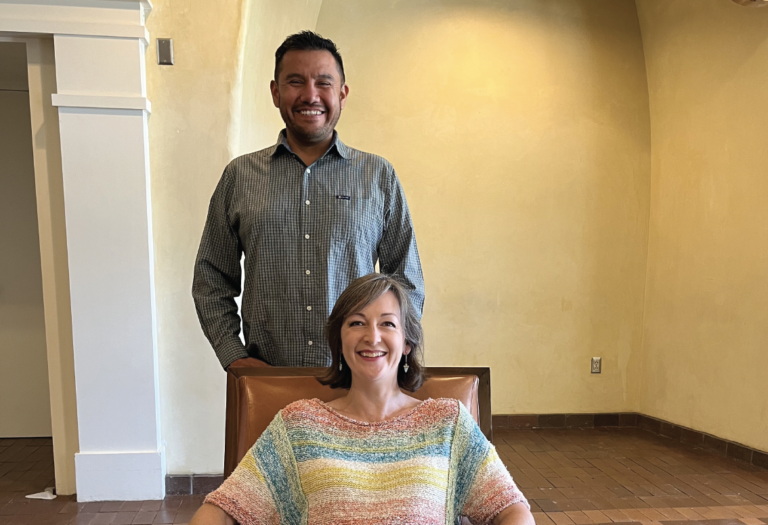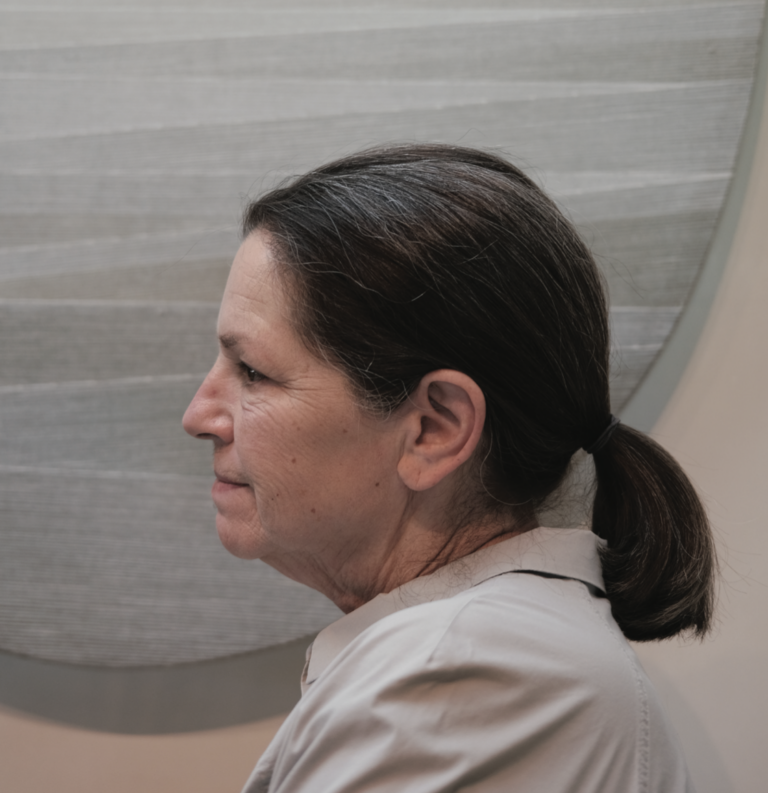SHE SEEMED SURPRISED that she was giving an interview for a magazine, impromptu as it was.
I had waited until the last moment to pick out a Christmas gift for my wife and showed up late in the afternoon at Kimmy’s studio. At first, she had told me she was sold out, but luckily, someone had canceled their order. So I dropped in. Except, that I was late for our appointment and the studio was locked up. Again, I was in deep shit! Luckily, as I was leaving, Kim opened the door.
The studio was like sand: white, exquisite. As she packed the set of dishes I was purchasing, I marveled at the shelves of very beautiful imperfect objects.
That day, she talked about art, working clay, life, and about how by knowing this one thing really well, she had discovered a gateway to everything else.
Why do you make pottery?
Because it satisfies all the weird needs I have in my life. I like to work with my hands. I grew up with a father who tinkers a lot. When a camera broke, we would take it apart and learn about it.
Also, pottery satisfies me because I like to stand. I like to be physical. I like to move. And I can do stuff while I throw. I can have friends come into the studio. I can talk, I can listen to books on Audible.
It satisfies the worker bee side of me. My favorite day in the studio is coming in and just throwing like 50 of the same shape. I can just do everything I wanna do and think. It’s like therapy too, so it satisfies everything.
How would you describe the character of what you do?
Everything has a little tiny mind of it’s own, but I try to make each piece look the same because the nature of my work is ‘production pottery.’ They all have their own character though.
It has a windswept desert feel to it. I marble porcelain with stoneware in an attempt to mimic the desert ground in the earth. The pottery itself speaks to me in the way that it’s very simple, sparse. I don’t like to incorporate much color. I don’t want the pottery to take away from the experience that you’re having of drinking coffee or like, having a latte or whatever. Or having food on a plate. I think food looks weird on a very brightly colored plate. I like a very understated experience. I don’t want it to overpower.
The main thing is that experience. You can have a vase with flowers in it on your table, and I want the flowers to really pop, and I want the vase to be an amplifier of the beauty there.
The pottery doesn’t feel precious. It feels substantial.
I focus more on functionality. And so the form would follow the function there. I make a vase that will hold flowers and then I want it to look good. It’s not precious in that I don’t make things thin and elegant and sculptural. I make mugs that have a good grip handle and you can hold and throw in the dishwasher and accidentally drop and it might break. But I want them to be sturdy and durable for restaurant use.
You also talk about liking imperfections.
It gives the pieces character, it reminds you that hands have made this, it reminds you that an unsteady kiln made this where we don’t know if a hairline crack will form, and if it does, you just go with it. Just drink out of the other side. I really like when things are used. I don’t like extras in my life. I’m not a materialistic person. I don’t have a huge wardrobe. I wear everything I have. And with pottery I want people to use the stuff they have, and I want it to show the love and the wear and the experience.
I like simplicity in my life. I know it doesn’t seem that way ‘cause I have like ten cars, and like multiple places I live. But I really thrive in simplicity and so I don’t like having many options of colors of clay or colors of glaze or shapes. I really like sticking to the classic forms and shapes and having one canvas of the blended marbled clay and the white or black glaze.
It’s a solitary experience, right?
It is a very solitary thing. When you’re throwing at the wheel, your mind has to be really focused on what you’re doing or else your mind drifts and your hands start moving the wrong way. You have to have so much awareness and control.
You can move your hand the wrong way and it knocks the piece of clay on your wheel. It can knock it off-center because when you’re spinning on the wheel, everything has to be symmetrical. If it’s wobbly, the wobble will go around and around, and you have to force it the right way. So if you get ticked off or something happens, the piece will mess up.
The clay doesn’t lie.
Totally. It has a muscle memory. My work depends on my mood that day. If I’m feeling positive or playful, I’ll just go with it and make a strange piece. If I’m in the flow, it’s a day where I’m positive and every piece works well. But then there are other days, when you’re driving in here you might catch every red light on the way somewhere. Right?
And when you’re at the wheel, sometimes on a bad day, nothing wants to center or you’re spilling your water bucket or whatever. If I haven’t exercised or if I’m hungover, those things affect the day.
And physically, if you’re not throwing the right form with your arms, your body, your shoulders, you can mess up your wrists, especially if you’re throwing heavy clay. You have to lean into it with your like whole shoulder when you’re throwing a large piece. Because if you just muscle it with your arms that wears out your elbow and your wrist. You can get carpal tunnel.
You can injure yourself for sure. A lot of the tools are sharp and your hands are soaking wet all day, so your skin gets supple and it’s easy to cut yourself. Another hazard is that the clay dust is bad to inhale. Basically the silica content in the clay can affect your lungs; it happens with welders, woodworkers. It’s dust collection in your lungs. It’s called silicosis.
And firing itself! I do gas firing. This morning, I was up at five a.m. crawling on the ground lighting eight giant burners with gas flowing everywhere. That’s very dangerous.
So there’s electric or gas. The electric kilns are like those big cylinder metal ones called skutts. I equate it to a stick shift versus an automatic. What I do is like a stick shift. You have to be with the kiln. So at five a.m., I started the kiln for a four hour duration from that with the low flames. At 10 a.m., I had to go and crank up the gas pressure. We have a lot of safety precautions, a lot of like solenoids, pilot switches, pilot lights. Then I have my alarms on my phone set for noon, 1:00, 2:00, and then 8:00, 9:00, and 10:00 tonight for all the other turn-ups. And then once it’s at temperature – 2,400 degrees – which will be at about 10 p.m. tonight, I open these little holes in the door and put welding goggles on and look inside at these little cones that bend when they’re at a certain melting rate, which tell you that you’re at temperature.
Is that part of the artistry?
Absolutely, firing, it’s art. Firing is part of that. Electric fire takes all of the fun out of it. With gas, there could be more wind in the air that affects the oxygen content in the kiln. We can close and open the chimney and control the oxygen level somewhat. But that’s the beauty of it – there’s this engineering side that has to do with pyrotechnics that just feeds my soul.
I take risks. I don’t love perfectionism. I thrive in mess, grit. I’m a big person who believes in being gritty. If something’s broken, I’m gonna figure it out. I have to change my toilet seat when I go home in a little bit. I’ll figure that out. I think there’s so much to life that I don’t feel like perfecting one thing.
Your work sells well at Bishop’s Lodge.
I feel really lucky that I’m making a living on my art. I didn’t even study art in college. I think that people really like to know the story behind the thing that they’re eating on or drinking out of. And I tell the story with my Instagram, unfortunately social media plays a big part in this. I think about the wind swept, sparse desert air in the Big Bend of Texas, where I go and post pictures That’s kind of modeled in the pottery.
I feel like people want that connection. Yeah. They want to come back to like the dirt and the earth that they’re from. And it’s kind of woo woo in a way, but it’s real.
When I left college, I had an interview at some environmental law firm. I asked the guy interviewing me why he liked what he did. And he said because he could explain it to his kids. He fights for environmental protection, he fights for the earth. I love the idea that what I do is so ancient and so simple and so describable. I just take mud and I make a vessel that you drink coffee out of. There’s nothing esoteric in there. And I really love that.
When did you know what you wanted to do?
I was living in Maryland, in Annapolis with some St. John’s students. I was dating this artist in Baltimore and he broke up with me. He broke up with me on Valentine’s Day, In an email! It was terrible! It was my first ever heartbreak. I had no idea what to do. I was sitting with my roommate and one of her girlfriends. The girl had a mug in her hand. And I was like, That’s really beautiful. She said, I made it. Do you wanna come to my class? It actually is about to start like this week.
She dragged me to class and I was terrible at first, but loved it! It all blossomed from there. Because of this jerk in Baltimore, my heart went straight to pottery. I mean everyone learns a lot about themselves in heartbreak. And I learned the most important thing I’ll ever know about myself. I learned how to throw myself into something. How to dive in, be passionate, apply myself fully and just run with that.
What do you like about Santa Fe?
I like how small it is. I like that everyone has to be really responsible for themselves and their reputation. Because it’s kind of like a village, wherever you go there is a shadow. In Santa Fe, you can’t escape who you are, you can’t go be anonymous at a coffee shop in a different part of town. It feels like everybody knows one another and everyone cares in a deep way that I have never experienced anywhere else. Like when someone says, How are you?, they actually want to know. I thrive in that environment.
Learn more at whiskeyandclay.com
Photo SFM

